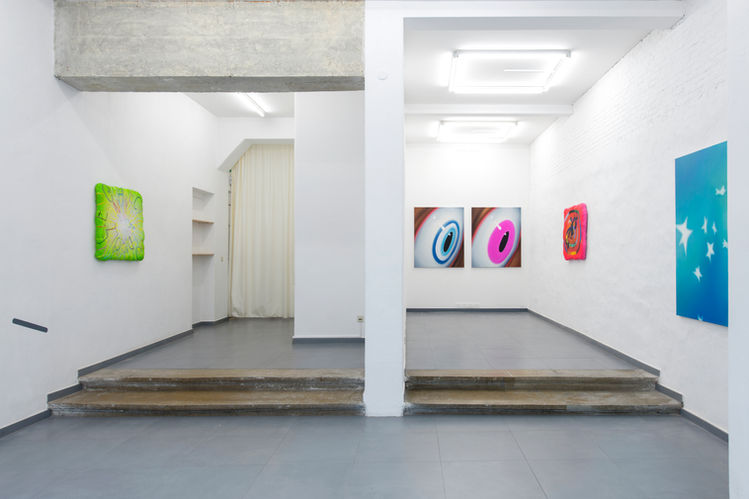Nokukhanya Langa
"Baby, I'm not even here. I'm a hallucination."
February 25 - March 27, 2021
Nokukhanya Langa’s practice is defined by her distinct and subversive visual language. She is neither of a school of pure abstraction, nor are her works plainly narrative or figurative. Instead, her works exist in the same space as would vernacular idioms. They are fugitives to direct meaning, and intuitively insinuate. They layer private histories, political and cultural undertones, allegories, seditious narratives, and humor, ultimately revealing themselves. Her work has a multiplicity among them so that a style is never full and her oeuvre is never fully settled; there seems to be an air of dissimilation - things are not totally straightforward. There are hidden meanings and tongue-in-cheek political expressions that are proclaimed as casually and softly as everyday idioms, while equally rife with meaning and intent.
Nokukhanya plays with the idea of what constitutes a painting in the classic sense by sometimes morphing the sides of the canvas, making the work look more like a piece from a natural rock wall. She also explores repetitive patterns, symbols, and letters - creating a kind of ‘tagging’ similar to those done in graffiti - all of which surmounts to both a jest and gesture toward colloquial language and life. Nokukhanya does this all with a wide-eyed ironic smile, as in the pair of ogling eyes repeated in the work. Her play on materiality is also reflected in her play on the meaning within the works themselves. The overall effect is their agile use of approachable every-day jargon and aesthetics in order to convey the much more subtle and incendiary subtext of the works - a kind of hallucinatory reality.
The title of the show, “Baby, I’m not even here. I’m a hallucination.” suggests the idea of multiple realities - a proposition felt in the illusory abstraction of the works. It also suggests the idea of reality monitoring; in the exhibition eyes are disassociated from the body, sometimes stand-alone, sometimes embedded into a bodiless background of a painting that looks like a rock wall or a piece of side-walk. The eyes in this exhibition are ever-present; watching, looking - anonymous. Techniques of blurring paint and the use of spirals are as commonplace as the presence of eyes in the show. With all of these motifs together, Nokukhanya deftly presents a self-referential as well as a timely and allegorical exhibition.
The exhibition is self-referential in that we see these disembodied eyes and their foggy, coiled vision making a hallucinatory reality in itself, representative of a kind of cognitive dissonance or a dissociation from one's personal reality. Meanwhile, the allegories come from a deeper reading of the embedded meanings seen through the lens of our current lives and world. Who is being looked at by whom, what conclusions are being drawn? What is reality? Whose reality are we living?
Looking at them made me think of a group of New-York based African American artists founding the collective ‘Spiral’ in 1963; it was created in order to discuss ways in which Black artists could represent their community and respond to racism and posed questions about the role of identity and socio-political realities in art-making. The collective didn’t last too long despite being important and influential - they only had one group show organized in 1965 amongst the members. The racism faced by the artists in the group was not just felt in their personal life, but professionally as well. Many of the members considered themselves ‘Abstract Expressionists’ but were refused entrance into that boy’s club by its critical keyholder, Clement Greenberg, for being too autobiographical - gaslighting, and reality monitoring at its finest and most racist. The Spiral group was named as such not only as a reference to the actual symbol and what it represents but also to its members’ varied styles, and therefore to the many faceted representations and actualizations of Blackness in art. There is not one way of being, not one reality.
In a large painting by Nokukhanya, a text written in and upon a spiral reads, “and a threat” repeatedly. Perhaps this is an extension of the title of the show, a nod to stereotypes, to another reality. In another painting with a spiral we see three characters: one getting beaten, the other beating, and the last watching with jubilation. The undercurrent of the works points to the violence of presumptive looking, the violence of positing identity as a singular experience or reality, and the constant manipulation of our own realities by the world around us.
























